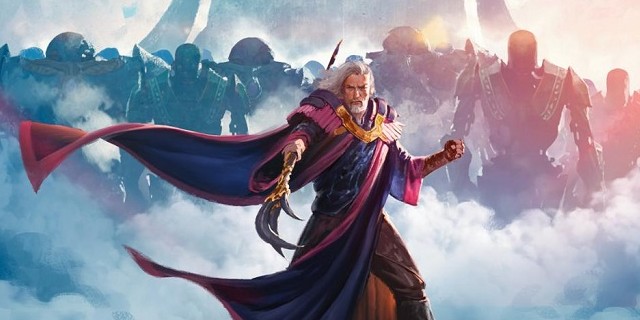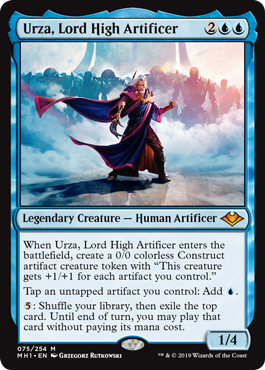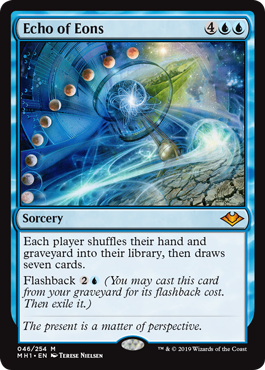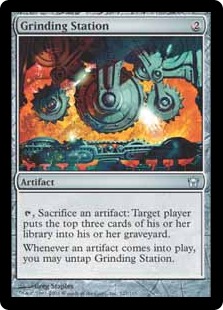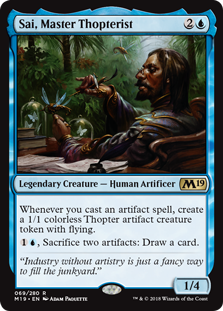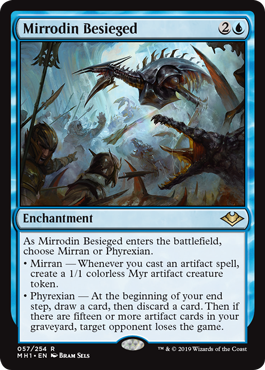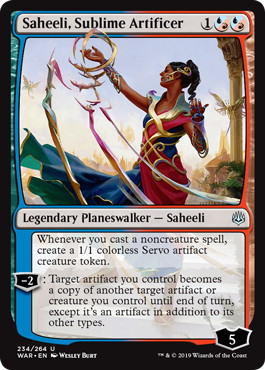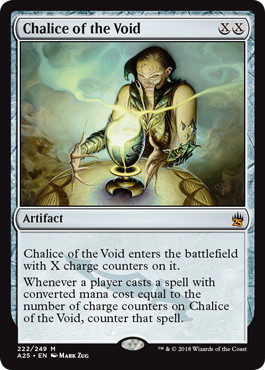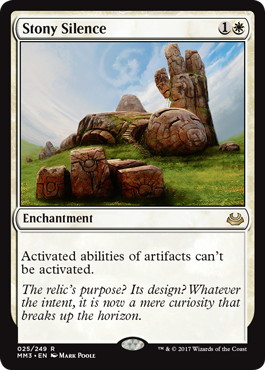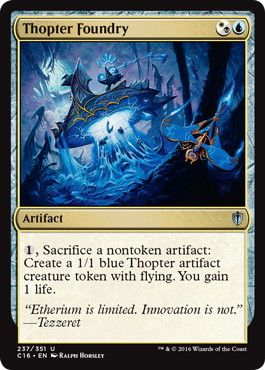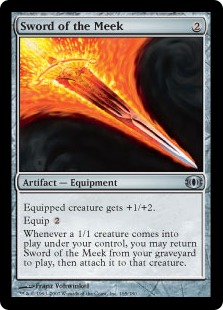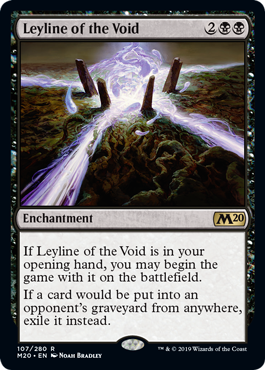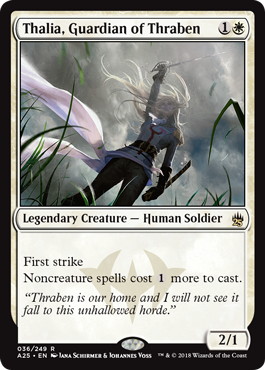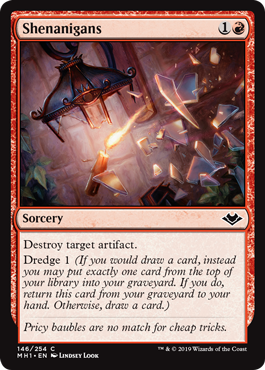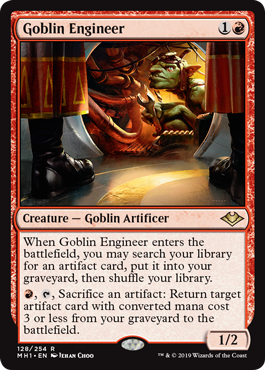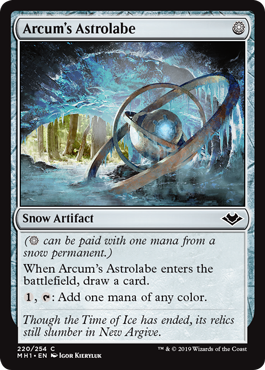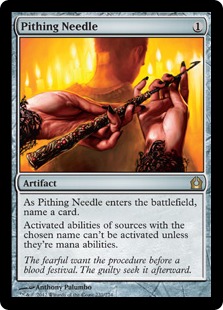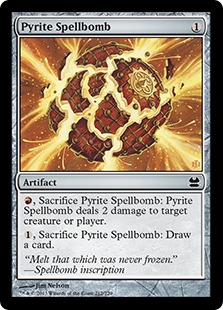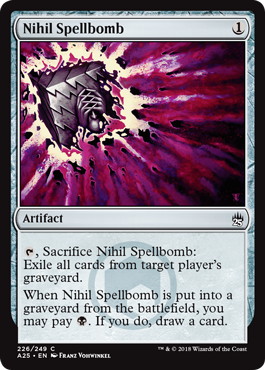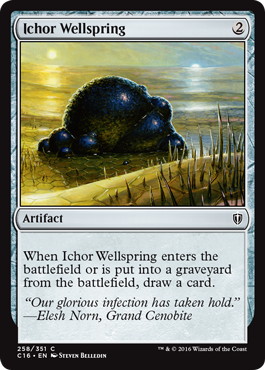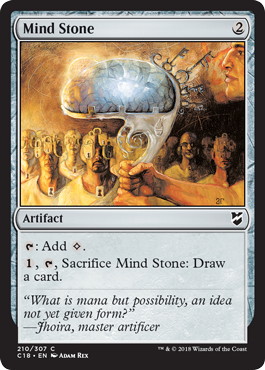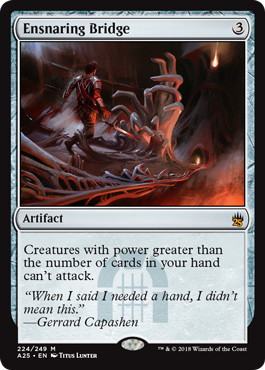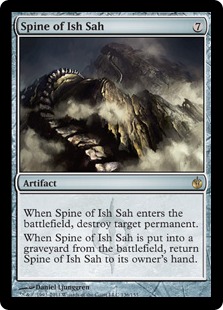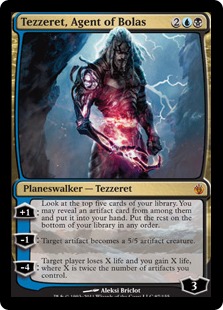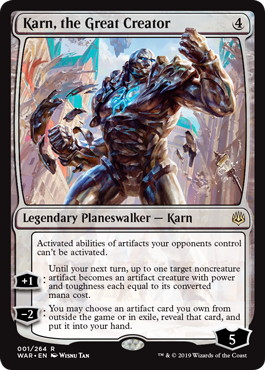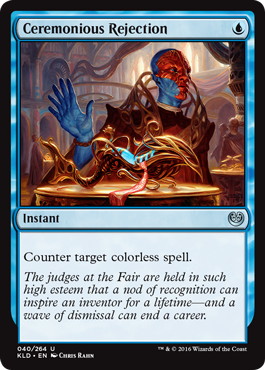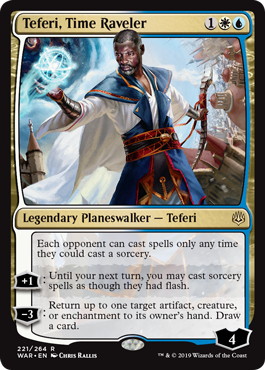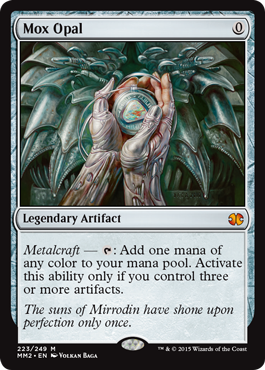(Editor’s Note: this article was written before the latest banned and restricted annoouncment.)
Introduction
Since Modern Horizons came out, the talk of the town is 《Hogaak, Arisen Necropolis》 and ridiculously powerful evolution of Bridgevine. While I appreciate the power and intricacy of the graveyard deck, Hogaak wasn’t the card I was fantasizing the most about during the spoiler season. That honor goes to 《Urza, Lord High Artificer》.
Probably not a surprise to anyone following me, given that I am somewhat known for my long-lasting infatuation with various 《Mox Opal》 Modern decks.
Step One: Evaluating Urza
Urza is a card that takes a while to unpack. Designers made sure that the first actual depiction of the character feels powerful and awe-inspiring, and they certainly delivered. The card ended up feeling strong, fun, complex, and non-obvious as to how to build decks with it.
The ability that strikes me as the most important one is the mana-producing one. Not a long time ago we had an artifact combo deck in 《Krark-Clan Ironworks》 (KCI) be one of the top decks in the format, and Urza can be seen as a toned-down tool that enables a similar style of a deck, and history repeatedly teaches us that fast mana is typically broken. That was the direction I believed was the way to build around Urza initially, leading to decklists like this:
- kanister
- – Urza Outcome
- Test Deck
2 《Cavern of Souls》
4 《Darksteel Citadel》
-Land (19)- 2 《Sai, Master Thopterist》
4 《Urza, Lord High Artificer》
-Creature (6)-
3 《Paradoxical Outcome》
3 《Echo of Eons》
4 《Everflowing Chalice》
4 《Mishra’s Bauble》
4 《Mox Opal》
3 《Engineered Explosives》
2 《Tormod’s Crypt》
1 《Mox Amber》
4 《Arcum’s Astrolabe》
3 《Grinding Station》
-Spell (35)-
3 《Dismember》
3 《Defense Grid》
2 《Force of Negation》
1 《Pongify》
1 《Echoing Truth》
1 《Ghirapur Aether Grid》
-Sideboard (15)-
A deck like this focuses entirely on Urza’s ability to produce extra mana, turning your deck into a bunch of Moxen, 《Timetwister》s, and 《Paradoxical Outcome》s, eventually winning by milling the opponent. While after fiddling with this and similar builds a little bit I am pretty confident that it’s fairly unlikely that you can build a truly functional deck this way, I did learn some things:
Just tapping an artifact for blue mana is not good enough of a rate to actually combo kill a player in a single turn, Storm- or KCI-style. If you want to do that, you need to pair Urza with a card that would multiply your mana output. 《Grinding Station》 untaps with every artifact, comboing with Urza into somewhat of a legit KCI impostor – the problem with Station is that outside of that, it’s very hard to make this card do anything.
《Sai, Master Thopterist》/《Mirrodin Besieged》/《Saheeli, Sublime Artificer》 all make you create two artifacts per spell, and are legitimately good cards for grinding. The downside of those is that they can get really clunky if you draw too many early in the game, and their grindy upside won’t actually come into play if the entirety of your deck is just textless artifacts – no 《Thoughtseize》 deck will ever succumb to that.
Trying to execute an engine-combo relying on your CMC 4 creature sticking and surviving throughout the entirety of it is not the easiest, too. People play removal, and if you don’t present other targets, they are just going to have it every time. You can try to counteract that with 《Chalice of the Void》, although using them as extra zeros in such a deck is a little optimistic, given that they’ll counter all subsequent ones. Playing Chalice would also mean giving up on 《Arcum’s Astrolabe》, which we’ll revisit later.
Overall, the exact list I proposed above is very susceptible to 《Stony Silence》 effects and creature removal, while also having a goldfish that leaves much to be desired, and lacking in interaction and resiliency. It seems very hard to improve the speed of the deck enough to outweigh those issues, so it leaves another option: slowing down.
This is where the other abilities of Urza kick in. Enter The Battlefield ability (ETB) creating a 《Karn, Scion of Urza》 token, in addition to being a neat reference, means that as long as you can put a sizable vanilla body into a good use, Urza plays very well against spot removal in longer games, leaving your opponent with a tough choice between dealing with just stats or with the value-generating permanent.
The last, 《Temporal Aperture》 ability is an interesting one. It is pretty inefficient as a way to keep comboing, given high activation cost and low odds of hitting a relevant card. It works better the stronger the average spell in your deck is; being able to put lands into good use also helps. That smoothly brings us to…
Step Two: Thopter Sword
Do you remember 《Sword of the Meek》 was once banned in Modern? Well, the combo with 《Thopter Foundry》 hasn’t been exactly playable since it’s unbanning, even though many tried. There are numerous issues with that combination; overloading on two-drops, no easy way to put 《Sword of the Meek》 into your graveyard, multiples of either card being poor draws, mana cost of 《Thopter Foundry》 clashing with 《Darksteel Citadel》, which then compounded with the lack of good one-drops, making 《Mox Opal》 pretty medium. Over-abundance of two drops made it hard to double-spell early.
Lack of effectiveness versus decks that aren’t interested in grinding was exacerbated by vulnerability to graveyard hate, 《Stony Silence》s, 《Thalia, Guardian of Thraben》, 《Shatter》s – basically, everyone had some tools that matched up well against you.
With both pieces out, Urza’s mana ability allows you to create infinite Thopters, life, and Aperture activations, casting your deck. Having a 《Splinter Twin》-type combo makes the otherwise generally lackluster, but contextually powerful Thopter Sword pairing pretty relevant, making its way into this type of a decklist:
- kanister
- – Urza Thopter Sword
- Test Deck
1 《Snow-Covered Mountain》
1 《Snow-Covered Swamp》
1 《Hallowed Fountain》
1 《Steam Vents》
1 《Watery Grave》
4 《Scalding Tarn》
3 《Polluted Delta》
1 《Darkslick Shores》
1 《Spirebluff Canal》
-Land (20)- 3 《Goblin Engineer》
2 《Sai, Master Thopterist》
4 《Urza, Lord High Artificer》
-Creature (9)-
4 《Mishra’s Bauble》
4 《Mox Opal》
4 《Arcum’s Astrolabe》
2 《Nihil Spellbomb》
2 《Pyrite Spellbomb》
1 《Grafdigger’s Cage》
1 《Pithing Needle》
3 《Thopter Foundry》
2 《Ichor Wellspring》
2 《Mind Stone》
2 《Sword of the Meek》
1 《Ensnaring Bridge》
1 《Spine of Ish Sah》
-Spell (31)-
2 《Fatal Push》
2 《Galvanic Blast》
2 《Thoughtseize》
2 《Teferi, Time Raveler》
2 《Tezzeret, Agent of Bolas》
1 《Ghirapur Aether Grid》
-Sideboard (15)-
Step Three: Other New Cards
《Goblin Engineer》 isn’t an excellent card by Modern standards, but as I mentioned, drawing multiples of useless Sword was a huge pain. 《Entomb》ing your Sword is functionally very similar to casting it, and the Engineer you get on top of that is just a nice bonus. Since the ETB is your main goal, it’s an okay exchange if it just dies, and against decks that play no removal and are weak to specific bullets, you can use the goblin in it’s intended way. In post-board games, it protects your important artifacts from people who cut 《Lightning Bolt》s for 《Ancient Grudge》s. It’s somewhat odd that this is a card worth splashing for, especially if I only recommend three copies, but the cost of a splash isn’t particularly high.
The reason why is because we also get to run a playset of 《Arcum’s Astrolabe》. This innocuous artifact asks quite a bit from you – although supporting a snow manabase isn’t hard in itself, it definitely means giving up on utility lands – but it definitely is worth it. Filling the otherwise unoccupied gap for a one-mana artifact with useful effects that don’t further expose you to hate is truly excellent. It just staying on the battlefield is helping a lot with Metalcraft issues those decks had previously. Being a spare artifact to sacrifice later doesn’t hurt either.
Step Four: Filling Out the List
This deck isn’t exactly easy to build, and the decklists are still in the stages of early iterations, and players are having success with different builds. The amount of time I spent perfecting the deck was limited so far – I have been focusing mostly on Hogaak – but it’s an extremely deep and fun puzzle. One of the things I figured out was that sticking too strongly with the heuristic of “good card = run four copies” might be a trap.
Cards referencing other card types are going to naturally cut into the space of their enablers if you max on them. Intuition might point towards wanting four copies of 《Whir of Invention》, but the end result of that would make your deck more consistent at drawing 《Whir of Invention》 exactly while making it less functional and consistent, more exploitable overall.
I found the same to be true for 《Goblin Engineer》s and Foundries; in general, it’s probably an underexplored concept in deckbuilding. At the same time, recently Brian Coval had success at the SCG tour playing a list with four copies of Engineer and Foundry, with extra 《Serum Visions》 thrown into the mix, so who knows where the truth lies. You always get to trim during the sideboarding, after all.
There are many options to choose from when it comes to filler artifacts/silver bullets to choose from; you definitely want a hefty amount of one-mana ones to develop and interact in the early turns a little. 《Pithing Needle》, 《Pyrite Spellbomb》, or 《Nihil Spellbomb》 might not seem like much, but often they are interactive enough to actually pace the game a little bit slower, which you definitely need.
First, 《Ichor Wellspring》 is a good value-target for your Engineers if you already got your sword and expect your Goblin to survive; 《Scrap Trawler》 is another. 《Mind Stone》 helps acknowledge how mana-hungry this deck can be, while also not being just extra lands. The second 《Sword of the Meek》 is good at forcing soft graveyard hate, but it’s definitely skippable. 《Ensnaring Bridge》 is very good against some people, and some decks are going to be just cold to that, but it’s not many of them and I could easily cut it.
Maindeck 《Sai, Master Thopterist》 is a strong tool, but it’s easy to sideboard it out if your opponent just goes way over the top. I would lie if I said that 《Spine of Ish Sah》 doesn’t hold a special place in my heart, and it might be too outlandish, but there is a lot of value in being able to answer/go over the top of every permanent, given that games with the deck tend to drag on. 《Damping Sphere》 wouldn’t have been great even if people actually played Tron nowadays, because 《Karn, the Great Creator》 still only costs four mana.
Speaking of…
Step Five: Figuring Out the Problems
《Karn, the Great Creator》 out of Tron specifically is a pretty big thorn in the side of this deck. He is a main deck hatecard that turns off your combo, forcing you to brawl fair with Urza himself, which is a very unreliable plan against somebody that casts 《Ulamog, the Ceaseless Hunger》s. The best answers to Karn I have found are either 《Tezzeret, Agent of Bolas》 (who is a great card to have overall, but not exactly the surgical tool you might need there), and a bunch of 《Ceremonious Rejection》s (which are ideal versus KtGC specifically, but painfully narrow). Right now I am pretending the issue doesn’t exist, but you probably need to account for Tron at some point.
The existence of Hogaak as the baseline best deck of the format makes not playing 《Leyline of the Void》 irresponsible. Doesn’t help when you are trying to fit those Rejections. I have heard reports from both Urza and Hogaak players that the combination of some artifact graveyard hate and Leylines with an infinite combo on top of that leaves the Urza player ahead, but I haven’t gotten to test this matchup myself to say that with confidence.
The rest of the sideboard I have cobbled together right now is just vanilla interaction and threats to juke. 《Teferi, Time Raveler》 specifically plays a nicely as both, while interacting with hate enchantments, which otherwise your deck wouldn’t be able to touch. In general though, with Urza himself playing a dual role as a combo enabler and an excellent lone threat, juking Thopter Sword hate sounds like a much more enticing proposition than trying to throw stuff like 《Fragmentize》 at the problem.
Keep in mind that while the main colors of the decklist I included are Grixis, 《Thopter Foundry》‘s hybrid mana cost means it could easily be base Jeskai if you just swap the lands, if there are white cards you’d really like to sideboard. Just remember that your 《Nihil Spellbomb》 won’t cycle easily anymore.
Wrapping Up
That is more or less the summarization of thought processes that I and my friend Julien Henry went through to assemble the prototype skeleton of semi-popular Urza Thopter Sword decks that are seen around nowadays. As I said, Urza is nothing but obvious to build around. Given how competitive those rough around the edges versions are, I do not doubt that we are only scratching the surface.
Until next time and take care,


